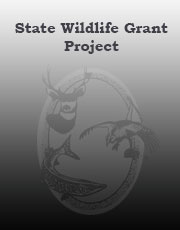Influences of Climate Variability and Landscape Modifications on Water Dynamics, Community Structure, and Amphipod Populations in Large Prairie Wetlands: Implications for Waterbird Conservation (SWG T2-7-R)
Northern prairie pothole wetlands provide crucial habitat for numerous waterbirds. However, wetland abundance and quality in the Prairie Pothole Region of North America has declined because of agricultural landscape modifications. Effective management of waterbird populations relies on understanding how landscape modifications alter wetland hydrology and biological communities in context of climate-driven wet–dry periods.
A common modification involves consolidation of smaller more-temporary wetlands into larger more-permanent ones. I evaluated whether consolidation drainage has progressivechronic effects on hydrology of remaining wetlands during 2003–2010 in the Prairie Pothole Region of North Dakota. For wetlands in topographic basins that were not already full, rate of water surface area change was positively correlated with consolidation drainage during a wetting phase, but negatively correlated during a drying phase. This unbalancing of water budgets through wetting and drying phases suggests that 1) consolidation drainage has a progressivechronic effect on wetland hydrology; and 2) wetlands receiving water in extensively drained landscapes will continue to increase in volume through each climate fluctuation until they reach their spilling point, then stabilize. Proportion of wetlands covered by cattail was negatively correlated with increases in water depth, thus cattail coverage may increase as water levels stabilize as a result of consolidation drainage. Fish were present in 57% of wetlands and probability of fish occurrence was greater in wetlands that had greater water depth and wetland connectivity. Weak evidence suggests amphipod densities decreased where there was extensive drainage and increased in more full basins, probably due to improved overwinter survival.
The alternative stable states hypothesis predicts clear versus turbid observable states that reflect differing trophic structures in wetlands. I conducted a landscape-scale evaluation of this iv hypothesis by examining the distribution of remotely-sensed chlorophyll a concentrations within 978 wetlands. My findings suggest that trophic structure in prairie wetlands is better understood within a continuum of trophic status rather than discrete states. My results provide an improved understanding of how land use and climate variability influence productivity in wetlands across the region and should help shape future research and conservation priorities focused on wetland services and waterbird populations.

